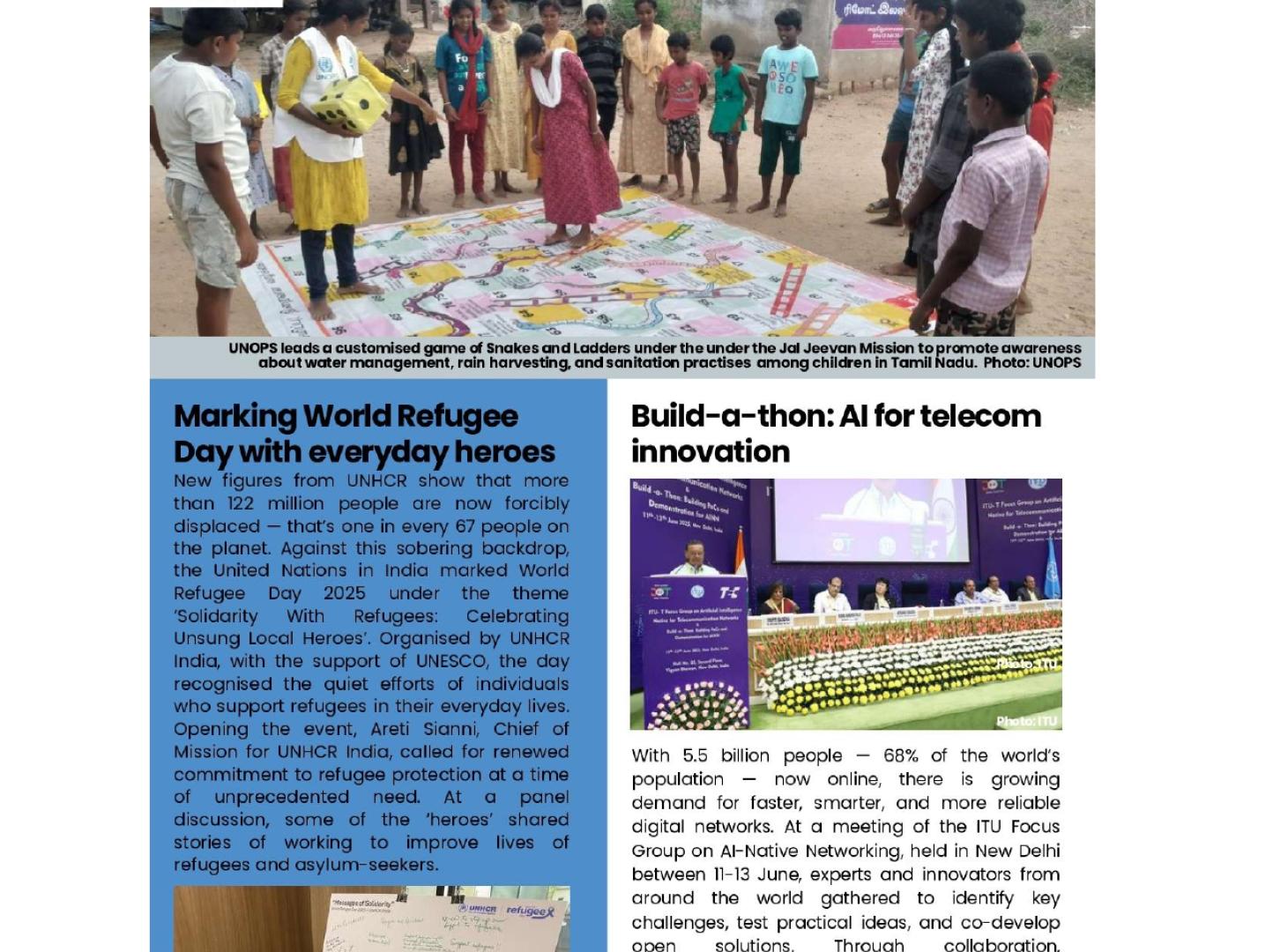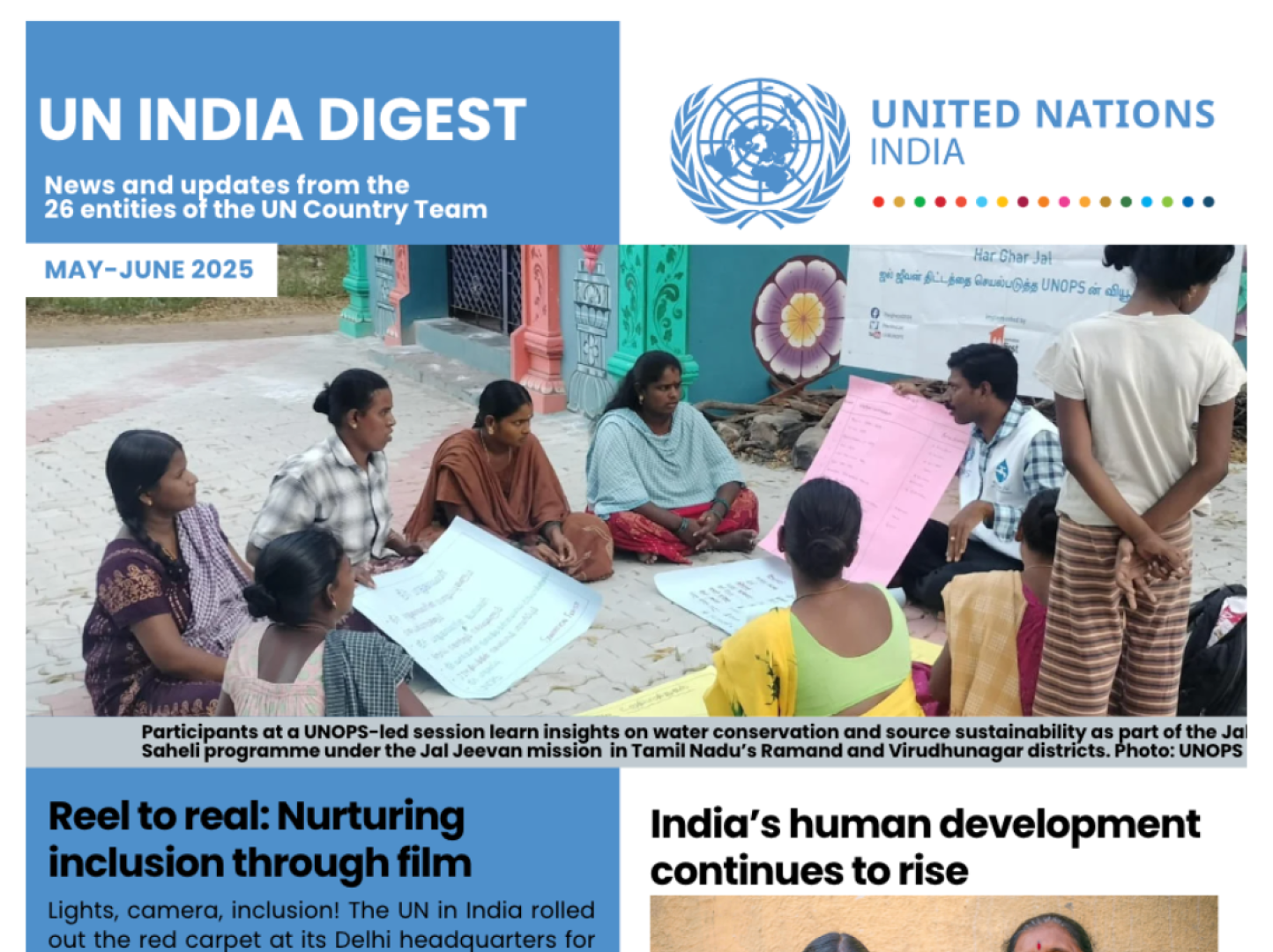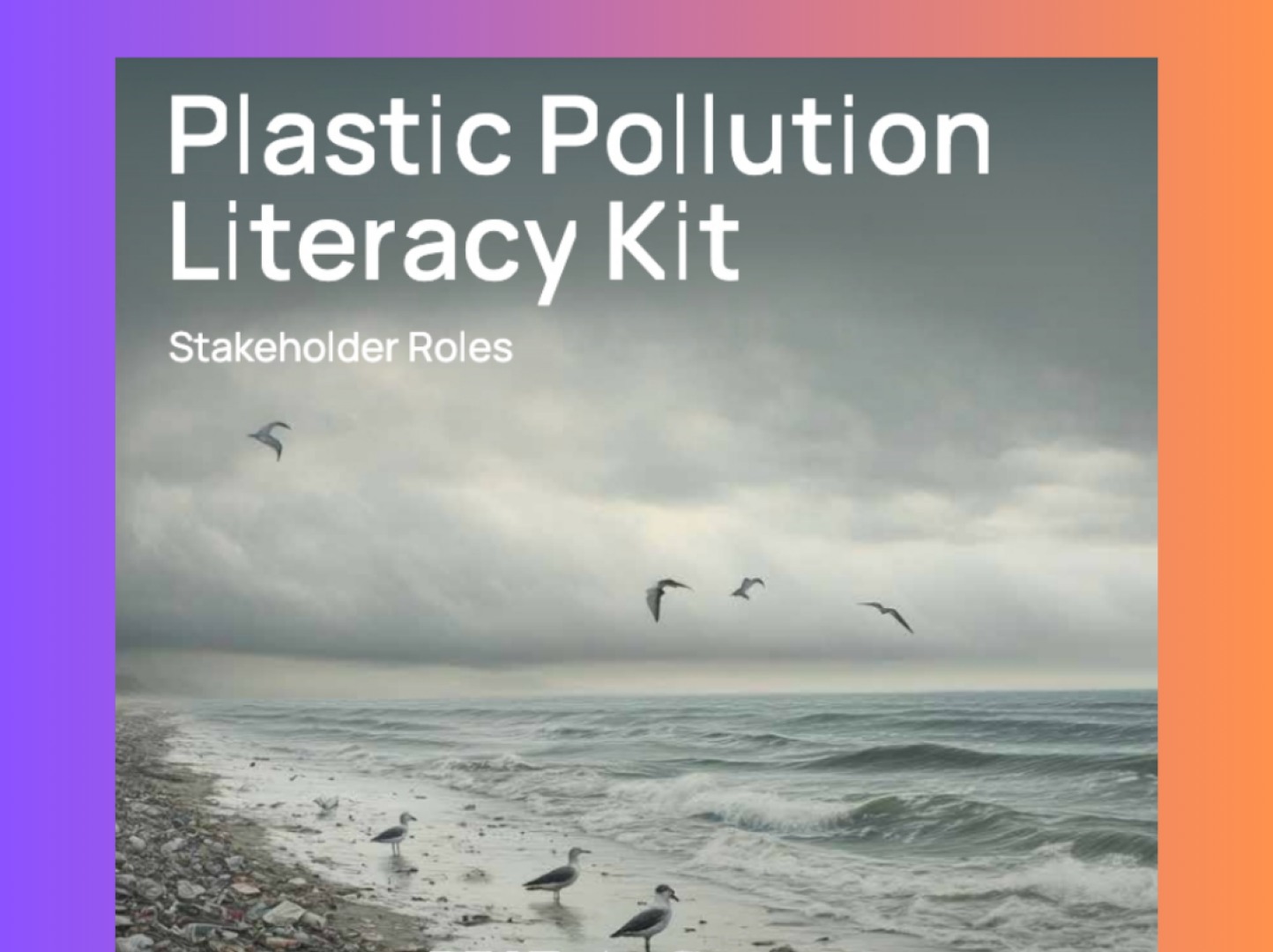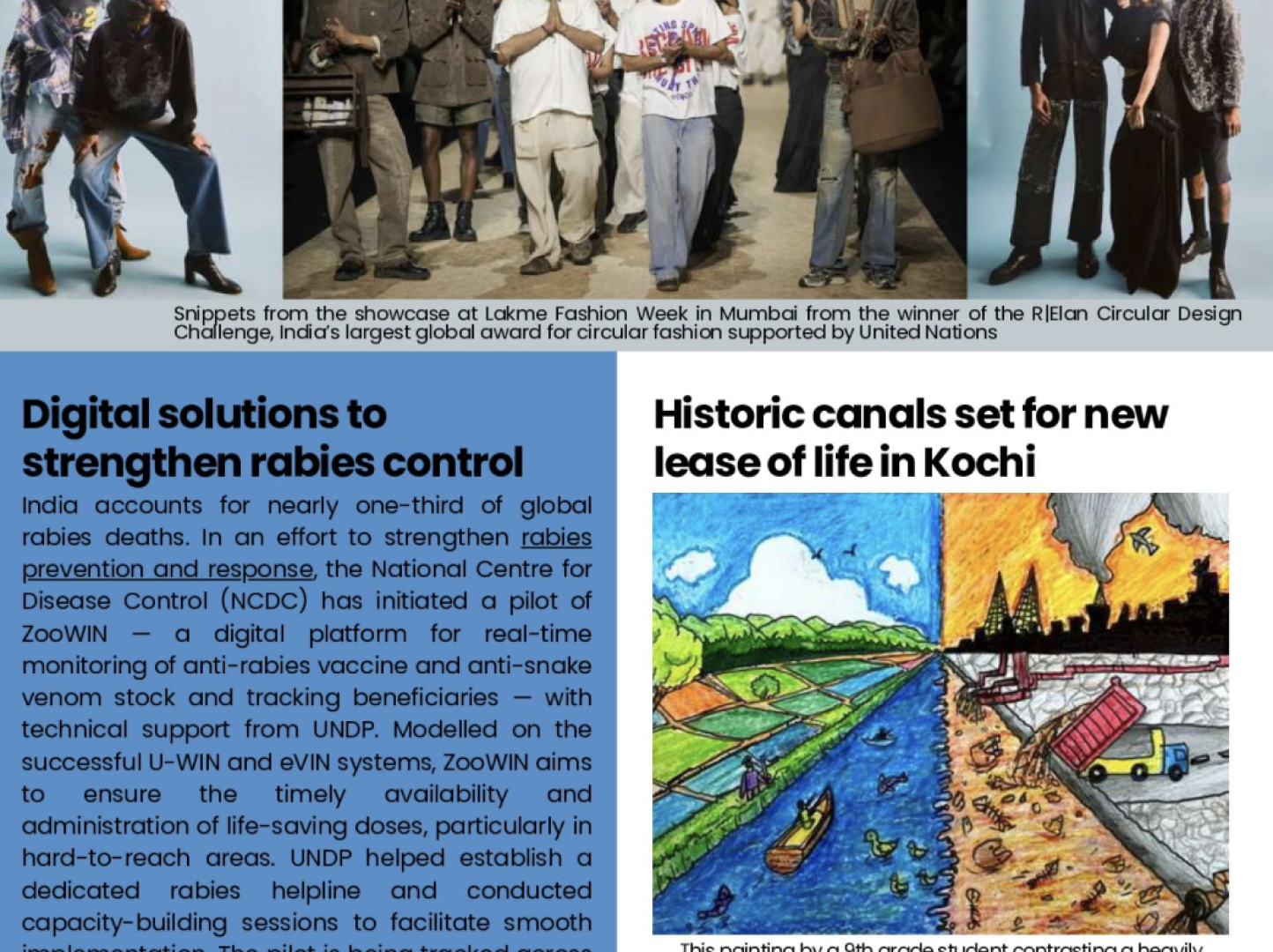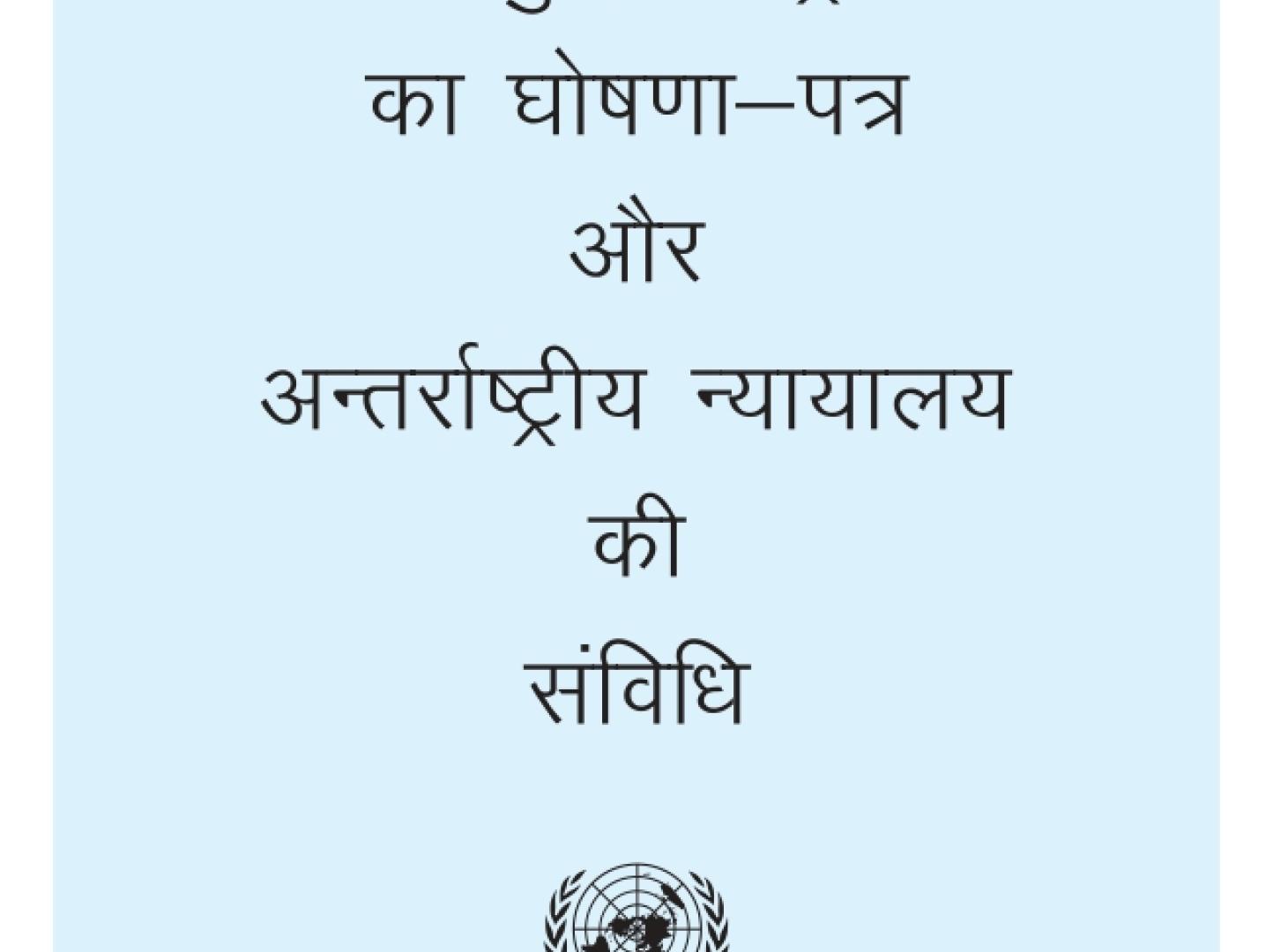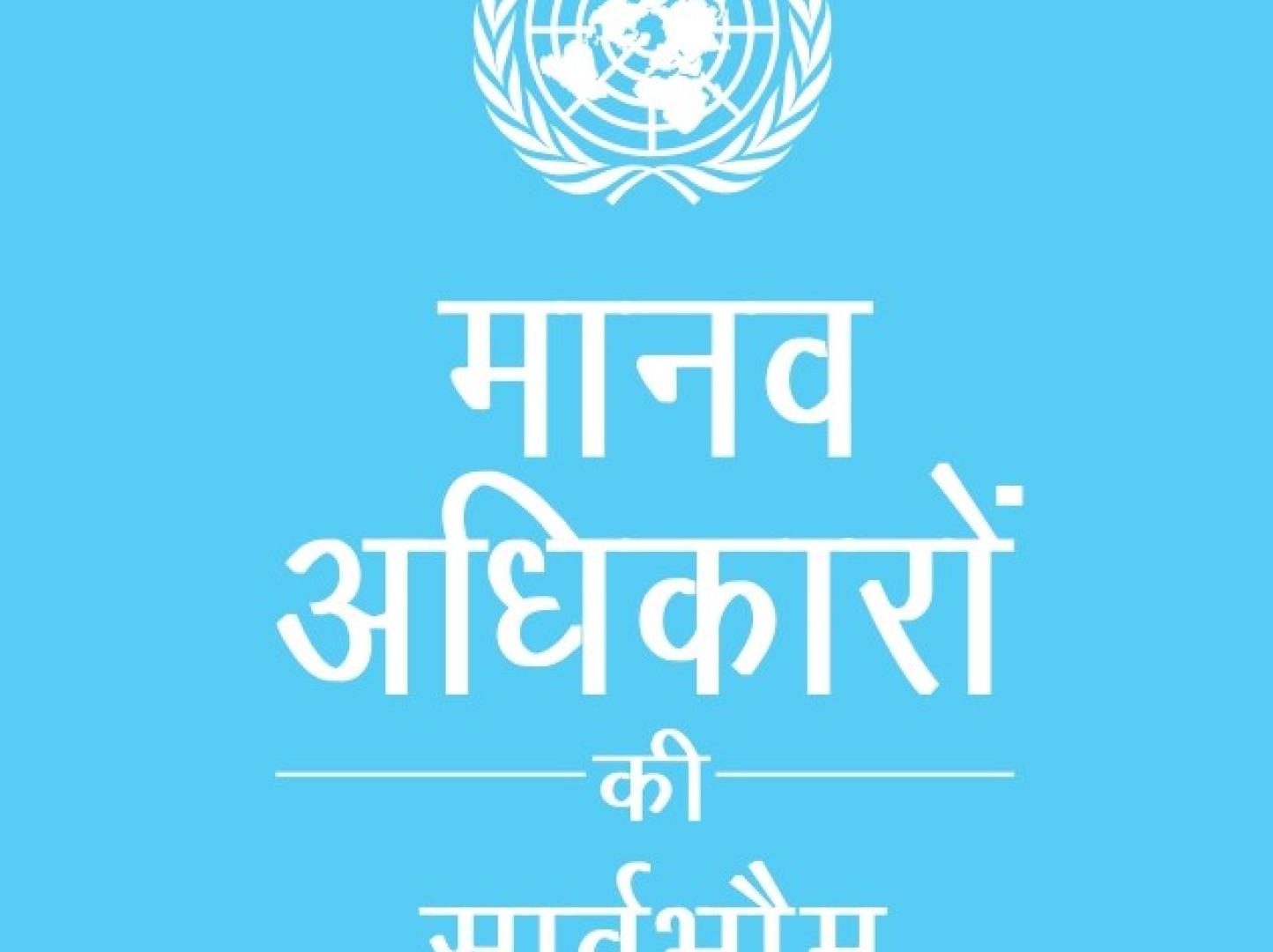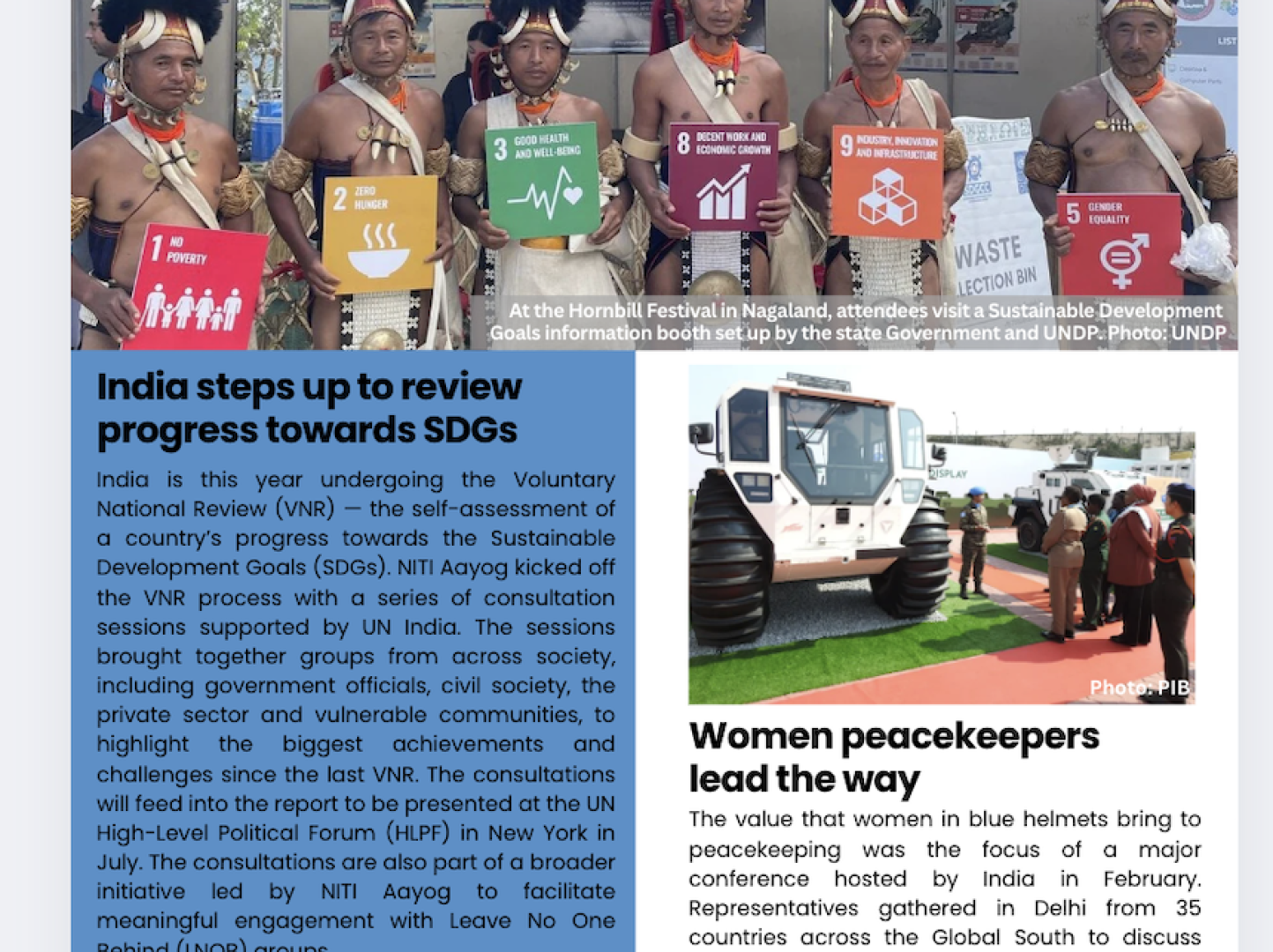Latest
The Sustainable Development Goals in India
India is critical in determining the success of the SDGs, globally. At the UN Sustainable Development Summit in 2015, Prime Minister Narendra Modi noted, “Sustainable development of one-sixth of humanity will be of great consequence to the world and our beautiful planet. It will be a world of fewer challenges and greater hope; and, more confident of its success”. NITI Aayog, the Government of India’s premier think tank, has been entrusted with the task of coordinating the SDGs, mapping schemes related to the SDGs and their targets, and identifying lead and supporting ministries for each target. In addition, the Ministry of Statistics and Programme Implementation (MoSPI) has been leading discussions for developing national indicators for the SDGs. State governments are key to India’s progress on the SDGs as they are best placed to ‘put people first’ and to ensuring that ‘no one is left behind’. The UN Country Team in India supports NITI Aayog, Union ministries and state governments in their efforts to address the interconnectedness of the goals, to ensure that no one is left behind and to advocate for adequate financing to achieve the SDGs.
Publication
08 July 2025
UN in India Digest June 2025
In this edition of the UN India Digest, #TeamUNinIndia takes you through some of the impactful work we've been part of this past month. From driving AI innovation in telecom networks to supporting inclusive urban planning in Odisha, and tackling plastic pollution in India, learn more about our work to deliver on the Sustainable Development Goals.
1 of 4
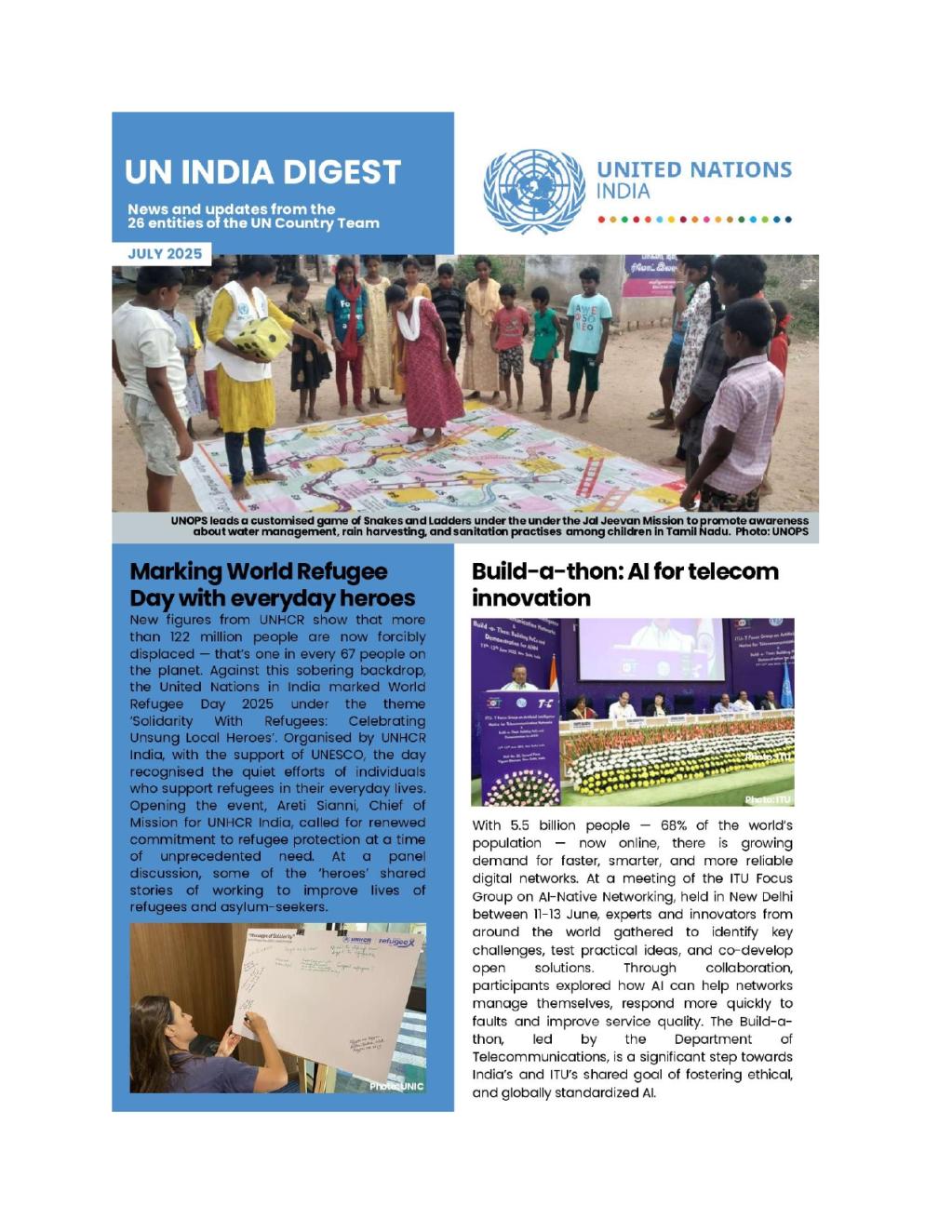
Speech
02 January 2025
Celebrating the dynamic UN-India partnership!
As we step into the New Year, it is a moment to both reflect and look forward. From breakthroughs in public health and food security to major advances in poverty reduction, technology and climate action, 2024 has proven to be another transformative year in India – as it has been for us at the United Nations in India, all 26 entities partnering with government, civil society and business across every State and Union Territory, as well as with our international development partners. Fresh off hosting the G20 presidency last year, India reinforced its role as a leading ‘voice of the Global South,’ driving international discourse on climate justice, food security and health equity among other issues central to the Sustainable Development Goals. In an era of deep political polarization and tensions worldwide, it also demonstrated the strength and resilience of its democracy, the world’s largest, with more than 640 million people voting in the national election. In parallel, India hosted major UN gatherings on key multilateral issues old and new. At the 2024 ITU World Telecommunication Standardization Assembly, held in New Delhi, new global agreements were reached on critical issues such as artificial intelligence (AI), sustainability and digital governance. With a strong focus on digital public infrastructure and emergency communications, India is at the forefront of setting digital standards that will impact the world for years to come.
The country’s cultural heritage shone brightly on the global stage as India played host to the annual UNESCO World Heritage Committee meeting for the first time. Notably, Assam’s moidams — the Mound-Burial System of the Ahom Dynasty — became India’s 43rd site on the World Heritage List.
On the ground, too, 2024 saw significant innovations across the country tackling India’s most pressing challenges with the UN proud to play a role. For example, Odisha launched a new 24-hour ‘Grain ATM’, a collaboration between WFP and the State Government. This technological advancement streamlines the public distribution system, reducing waiting times and ensuring that the most vulnerable have greater food security. UN Women led collective action on gender equality, globally the ‘unfinished business of our time’ in the words of the UN Secretary-General, while ILO convened the system to help unleash India’s unequalled potential demographic dividend.
Another major milestone was reached with India formally declaring the end of trachoma as a public health problem, overcoming one of the leading global causes of blindness. By implementing the WHO SAFE strategy — targeting treatment, prevention, and hygiene — India dramatically reduced infection rates. This success underscores the power of coordinated efforts between government, health-care workers, and international partners. India’s digital public infrastructure continues to set global benchmarks. The U-WIN platform, supported by UNDP, has been instrumental in modernizing vaccine distribution, ensuring accessibility and equity in immunization. This leap builds on previous successes like eVIN and CoWIN, and links with work of WHO and UNICEF, strengthening India’s ability to respond to public health challenges both now and in the future.
This year saw the update and release of the India’s National Biodiversity Strategy and Action Plan (2024-2030) supported by UNDP. This strategic plan aims to set nature on a recovery trajectory by embracing a 'whole-of-government' and 'whole-of-society' approach.
The UN family in India also celebrated several milestones in 2024. UNICEF marked 75 years of programming in the country to improve the health, safety and rights of children, while UNFPA commemorated 50 years, having contributed significantly to advancing sexual and reproductive health, especially for women and girls.Inclusion remained a central theme of the UN’s work in India this year. A joint non-discrimination statement on the employment of persons with disabilities was signed by all 26 UN agencies operating in the country.We formed a Multilateral Coordination Group with the government to bring together UN agencies, tailor programs for the welfare of persons with disabilities, and adapt global best practices to the Indian context.
As we approach the UN’s 80th anniversary next year, the momentum gained this past year will be crucial in advancing the initiatives outlined in the Pact for the Future that was adopted by all UN Member States, including India, at UN Headquarters in September. This landmark agreement, along with its key annexes — the Global Digital Compact and the Declaration on Future Generations — reflects a global commitment to building a peaceful, sustainable, and inclusive future, and to making the UN more effective and relevant for dealing with tomorrow’s challenges. India’s leadership in adopting and advancing these resolutions, particularly in strengthening South-South cooperation and prioritizing the voices of youth, will be vital in shaping the future.
Across six outcome groups of the Cooperation Framework, the UN in India has consistently driven impactful results through collective action and partnerships. Just a few of the highlights include:Health and well-being: Through the U-WIN platform, over 17 million pregnant women and 59 million children have been digitally registered, and more than 264 million vaccine doses have been tracked.Nutrition and food security: More than 12.3 million Indians, including children and breastfeeding mothers, received nutritious fortified foods.Quality education: We helped train 18,000 teachers as Health and Wellness Ambassadors across 26,000 schools spanning 33 districts.Economic growth and decent work: Conducted health and safety training to improve the working conditions at nearly 300 tea-growing estates.Environment, climate, WASH, and resilience: 2.9 million tons of CO2 emissions reduced through energy conservation and climate-friendly initiatives Empowering people, communities, and institutions: Supported the government in expanding gender-responsive budgeting in six states, leading to increased funding for women’s empowerment and gender equality.One of the standout moments of 2024 was when Major Radhika Sen from the Indian Army, serving as an Indian peacekeeper in the Democratic Republic of Congo, received this year’s UN Military Gender Advocate of the Year Award.
Additionally, the fourth edition of the SDG India Index produced by NITI Aayog with support from the UN showed India’s score rising to 71 out of 100, up from 66 in the previous edition.As we enter 2025, the race to achieve the SDGs enters a critical phase. With only half of the Decade of Action left, the urgency is unmistakable. This year has demonstrated the power of purpose and partnerships. From safeguarding cultural heritage to pioneering advancements in technology, India is showing how nations can drive sustainable growth while addressing global challenges. The United Nations, a humble partner working alongside India in this journey, remains committed to ensuring that progress benefits everyone. As I could not have begun to fully cover here the wide range of collaborations in which the UNCT is engaged, please have a look at our monthly newsletters on our website, or the annual report which will be issued within the first quarter of 2025, for more exhaustive stories of our work. The path ahead is steep, but with shared resolve, a more equitable and sustainable future is within reach. India is uniquely positioned among nations to accelerate development results at a scale and pace sufficient to give the global SDG push a vital boost, and with it optimism towards 2030.On behalf of the UN in India family, I am pleased to share our deep appreciation for your partnership in the year that was, and in anticipation of the important collective path ahead.Dhanyavaad!Shombi Sharp
United Nations Resident Coordinator, India
1 of 4
Story
15 January 2025
WMO joins IMD’s 150th celebration
India recorded its hottest year on record in 2024, with extreme heat impacting human health, agriculture, water resources, and energy. Celeste Saulo, Secretary-General of the World Meteorological Organization (WMO), highlighted these challenges during the 150th anniversary celebrations of the India Meteorological Department (IMD) on 14 January. The event, attended by Prime Minister Narendra Modi and Minister of Earth Sciences Jitendra Singh, celebrated IMD’s achievements and introduced Vision-2047, aimed at making India a climate-resilient nation by the time it celebrates 100 years of independence.“We aim to modernise meteorology and reduce weather-related fatalities,” Modi said. “This Vision will contribute to a sustainable future.”Saulo praised IMD’s role in disaster risk reduction and its support to sectors such as agriculture, water resource management, and public health.“IMD’s legacy has significantly enhanced India’s resilience and contributed to global efforts,” she said.India, a founding member of WMO since 1950, has been represented on its Executive Board for over 60 years, longer than any other country in the Asia-Pacific region. IMD’s role in severe weather forecasting, flash flood warnings, and seasonal climate outlooks was also acknowledged. “Accurate forecasts and coordinated disaster management have saved countless lives,” Saulo remarked, noting that IMD’s commitment to early warning systems aligns with WMO’s Early Warnings for All campaign to safeguard people from extreme weather worldwide.
1 of 4
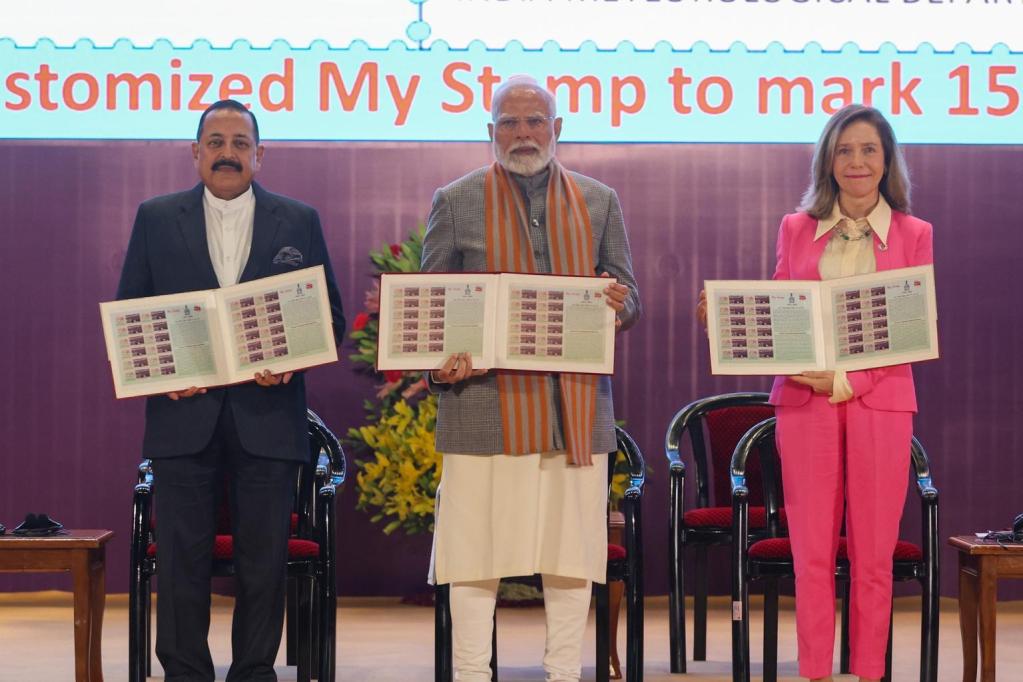
Story
16 October 2024
Global conference begins on future of digital tech standards
Thousands of tech experts, industry leaders, policymakers, researchers and government officials have gathered in New Delhi for a global United Nations-run conference on the future of technology standards. The World Telecommunication Standardization Assembly (WTSA) formally opened on 15 October in the capital’s Bharat Mandapam venue with an opening ceremony featuring Indian Prime Minister Narendra Modi. WTSA, taking place in the Asia-Pacific region for the first time, runs until 24 October. It is being held alongside the India Mobile Congress. Held every four years, WTSA sets out priorities for experts around the world who work year-round to develop the standards established by the UN’s International Telecommunication Union (ITU). The assembly’s opening heard calls for universal connectivity, the need for ethical artificial intelligence (AI) and how digital inclusion can make a meaningful difference to people’s lives.
In his remarks, Mr. Modi stressed that “security, dignity and equity” are the principles on which discussions at the assembly and congress should be based.
“Our objective should be that no country, no region and no community should be left behind the in this digital era,” he said.
ITU Secretary-General Doreen Bogdan-Martin said the world had a lot to learn from what India has already accomplished with its digital public infrastructure. “This global gathering calls for bold, collective action. In the next 10 days, we can strengthen the role of international standards as the bedrock of global digital governance,” she said.
ITU's standardization work is driven by the contributions and consensus decisions of the agency’s membership, which includes 194 Member States and more than 1,000 member companies, universities, and international and regional organizations.
WTSA reviews the strategy, structure and working methods of ITU's standardization arm every four years. It also approves the mandates and appoints the leadership teams of expert groups for international standardization.
***
In his remarks, Mr. Modi stressed that “security, dignity and equity” are the principles on which discussions at the assembly and congress should be based.
“Our objective should be that no country, no region and no community should be left behind the in this digital era,” he said.
ITU Secretary-General Doreen Bogdan-Martin said the world had a lot to learn from what India has already accomplished with its digital public infrastructure. “This global gathering calls for bold, collective action. In the next 10 days, we can strengthen the role of international standards as the bedrock of global digital governance,” she said.
ITU's standardization work is driven by the contributions and consensus decisions of the agency’s membership, which includes 194 Member States and more than 1,000 member companies, universities, and international and regional organizations.
WTSA reviews the strategy, structure and working methods of ITU's standardization arm every four years. It also approves the mandates and appoints the leadership teams of expert groups for international standardization.
***
1 of 4
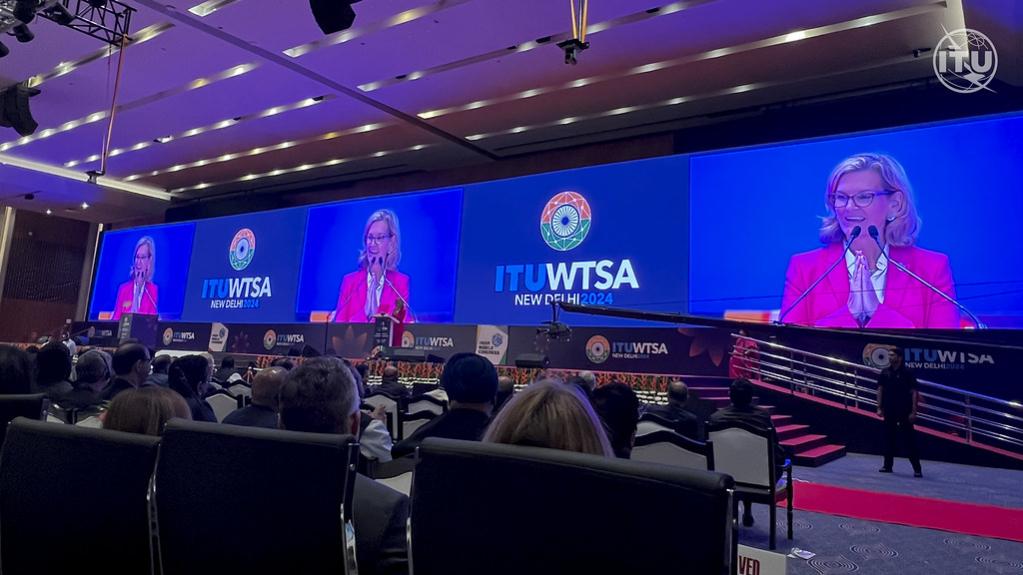
Story
24 October 2025
Weaving sustainability into fashion at the Circular Design Challenge
Runway-ready pieces made from chicken feathers, a minimalist wardrobe crafted from banana leather and stainless steel scraps, and a glimpse of an exciting new world of ingenious sustainable couture at the 2025 edition of the Circular Design Challenge. In a fitting finale to the year-long search for the winner of India’s largest award for sustainable fashion, designer Varshne B took home the coveted prize for her collection ‘Symbiosis’, from her eco-conscious label CIRCLE, which includes multifunctional unisex pieces in clean silhouettes woven out of biodegradable plant-based fabrics, including Calotropis fibres, Korai grass, banana leather and repurposed deadstock or leftover fabrics. The runners-up, designers Radhesh Agrahari and Muskan Sainik, were applauded for their unique approach to transform chicken feathers and poultry waste to build outfits made of lightweight, natural fibre with a wool-like texture, and handmade papers for their brand, Golden Feathers.
Six finalists walked the runway at the Lakme Fashion Week in partnership with FDCI in the Indian capital on a crisp October evening, their designs picked out by jury panels of fashion industry leaders and sustainability experts across continents from a pool of more than 160 applicants — the largest cohort yet for the Reliance Industries Limited and the United Nations in India Circular Design Challenge since its inception in 2018. The challenge, which looks to embed sustainability at the heart of fashion, has helped unearth fresh global design talent and innovation by weaving values including responsible production, design-led innovation and closed-loop manufacturing into the fabric of the fashion industry to set up a future-proof fashion ecosystem that is ethical, responsive, and inclusive. “This is the future of fashion where innovation meets creativity and churns out designs with circularity at the core,” United Nations Resident Coordinator in India Shombi Sharp said, as he joined a jury panel including Kimi Dangor, Kulsum Shadab Wahab, Orsola de Castro, Payal Jain and Serge Carreira to shortlist the winners at UN House in New Delhi. The finalists, including British designer and UK shortlist winner Maximilian Raynor, EU winner and founder of Italian brand Cavia Martina Boero, Jesica Pullo's Argentine-Italian fashion brand BIOTICO, and Indian label Farak from designer Rishabh Kumar, also had the opportunity to showcase their designs before Government of India Ministry of Textiles Additional Secretary Rohit Kansal during the final jury meeting, held days before the finale.
The designers were celebrated for their efforts to exemplify the United Nations ethos of 'Leave No One Behind' that is central to the idea of sustainability. Jesica Pullo’s Biotico, from Buenos Aires, for example, is co-created with persons with disabilities through skill building craft, while Rishab Kumar’s Farak, from Jaipur in India, works alongside traditional artisans to revive a centuries-old art of printing using wooden blocks. Chennai-based designer Varshne B, who works with artists who weave traditional korai grass mats in in Tamil Nadu, sources banana leather from Jinali Mody, who was recently awarded the UNEP Young Champion of the Earth 2025 for her material-science startup that turns banana crop waste into a plant-based leather alternative.
The two finalists were awarded seed funding and a mentorship, with the winning label CIRCLE earning a runway showcase for the winning collection at the Lakmē Fashion Week x FDCI in March 2026.
Six finalists walked the runway at the Lakme Fashion Week in partnership with FDCI in the Indian capital on a crisp October evening, their designs picked out by jury panels of fashion industry leaders and sustainability experts across continents from a pool of more than 160 applicants — the largest cohort yet for the Reliance Industries Limited and the United Nations in India Circular Design Challenge since its inception in 2018. The challenge, which looks to embed sustainability at the heart of fashion, has helped unearth fresh global design talent and innovation by weaving values including responsible production, design-led innovation and closed-loop manufacturing into the fabric of the fashion industry to set up a future-proof fashion ecosystem that is ethical, responsive, and inclusive. “This is the future of fashion where innovation meets creativity and churns out designs with circularity at the core,” United Nations Resident Coordinator in India Shombi Sharp said, as he joined a jury panel including Kimi Dangor, Kulsum Shadab Wahab, Orsola de Castro, Payal Jain and Serge Carreira to shortlist the winners at UN House in New Delhi. The finalists, including British designer and UK shortlist winner Maximilian Raynor, EU winner and founder of Italian brand Cavia Martina Boero, Jesica Pullo's Argentine-Italian fashion brand BIOTICO, and Indian label Farak from designer Rishabh Kumar, also had the opportunity to showcase their designs before Government of India Ministry of Textiles Additional Secretary Rohit Kansal during the final jury meeting, held days before the finale.
The designers were celebrated for their efforts to exemplify the United Nations ethos of 'Leave No One Behind' that is central to the idea of sustainability. Jesica Pullo’s Biotico, from Buenos Aires, for example, is co-created with persons with disabilities through skill building craft, while Rishab Kumar’s Farak, from Jaipur in India, works alongside traditional artisans to revive a centuries-old art of printing using wooden blocks. Chennai-based designer Varshne B, who works with artists who weave traditional korai grass mats in in Tamil Nadu, sources banana leather from Jinali Mody, who was recently awarded the UNEP Young Champion of the Earth 2025 for her material-science startup that turns banana crop waste into a plant-based leather alternative.
The two finalists were awarded seed funding and a mentorship, with the winning label CIRCLE earning a runway showcase for the winning collection at the Lakmē Fashion Week x FDCI in March 2026.
1 of 5

Story
24 October 2025
UN Day 2025
Under the global theme Building Our Future Together, the United Nations marked its 80th anniversary, a moment to celebrate eight decades of peace, human rights, and international cooperation, while renewing the collective commitment to a shared and sustainable future.Eighty years on, the United Nations remains a living legacy of multilateralism. Its story is one of endurance and purpose, shaped by generations who believed that dialogue and cooperation must prevail over conflict and isolation. The anniversary serves not only as a tribute to that legacy but also as a call to strengthen it — to make the UN more inclusive, more effective, and more responsive to the needs of the next generation.Senior UN leaders reflected on this milestone and the vision it represents. Secretary-General António Guterres reminded the world, ““We are all privileged to be part of one of the most ambitious and profound undertakings in human history. The decision, despite our differences, to solve problems together, to work sincerely, creatively and humbly toward a better future for all.”President of the General Assembly Annalena Baerbock observed that “we often forget in the trenches of bureaucracy, politics, and diplomacy, how much this institution matters to ordinary people.”UN Deputy Secretary-General Amina Mohammed spoke of unity and renewal, noting that “in this 80th year of the United Nations, it is time to make that choice again and to move forward better together as one human family, as one institution serving humanity.”Under-Secretary-General for Global Communications Melissa Fleming reflected that “we have a United Nations that has an amazing and rich history that we can all be proud of. But that we also have at 80, a United Nations that is renewed, and together, we can be part of its living legacy.”In India, the day was marked with the unveiling of a commemorative UN Day 2025 postage stamp by External Affairs Minister S. Jaishankar at the Ministry of External Affairs. Later in the evening, UN House in New Delhi hosted a reception that brought together diplomats, government officials, and cultural performers to celebrate both United Nations Day and the organisation’s 80th anniversary, an occasion that reflected the spirit of unity and shared purpose.Around the world, the United Nations is marking this milestone with the global photo exhibition Shared Lives, Shared Future, organised by the UN Department of Global Communications in collaboration with the Governments of Italy, Slovenia, and Switzerland. The exhibition features over 200 human stories from all 193 Member States and celebrates the diversity and resilience that define our shared global journey. It remains on view at UN Headquarters in New York until January 2026 and can also be explored online at un.org/en/exhibits/exhibit/un80.
1 of 5

Story
21 October 2025
FAO celebrates 80 years of partnership with India on World Food Day
The Food and Agriculture Organization of the United Nations marked its 80th anniversary alongside the celebration of World Food Day 2025, reaffirming eight decades of partnership with the Government of India in transforming India’s agrifood systems — from food shortage to food surplus and beyond. The event was organized in alignment with World Food Day 2025’s theme, “Hand in Hand for Better Food and a Better Future,” and brought together senior officials from the Government of India, representatives from UN agencies and Rome-based agencies (RBAs), development partners, and farmers from across India. The celebration reflected on FAO’s enduring contribution to India’s agrifood systems transformation and its progress toward achieving the Sustainable Development Goals (SDGs). From food-deficient beginnings at the dawn of independence, India’s achievements in food and agriculture have been truly remarkable. The country has transformed into a food-surplus nation that feeds 1.4 billion people and contributes to global food security. This progress has been driven by visionary policies, scientific innovations, and strong international collaboration spearheaded by the Ministry of Agriculture and Farmers’ Welfare (MoA&FW) in close partnership with FAO. As a founding member of FAO since 1945, India’s journey exemplifies how hunger and malnutrition can be reduced at scale when production systems, delivery mechanisms, and policy innovation work in unison. The Chief Guest, Dr Devesh Chaturvedi, Secretary, MoA&FW, Government of India, delivered the keynote address, recognizing FAO’s technical expertise and partnership with the Ministry in achieving self-sufficiency in food grains, promoting crop diversification, and enhancing farmer resilience through innovation and sustainable practices. He reaffirmed India’s commitment to working with FAO and the global community, to build sustainable, resilient, and equitable food systems, ensuring better food and a better future for all. A.P. Das Joshi, Secretary, Ministry of Food Processing Industries, highlighted the growing importance of food processing, value addition, and entrepreneurship in enhancing farmer incomes, reducing post-harvest losses, and strengthening agrifood value chains. The segment “FAO Through the Years” featured a special video message from Mr. Daniel Gustafson, Special Representative of the FAO Director-General, and an address by Professor R.B. Singh, former Assistant Director-General, FAO Regional Office for Asia and the Pacific. Professor Singh reflected on FAO’s pioneering work in strengthening agricultural research, capacity building, and farmer empowerment in India. A Farmers’ Spotlight session followed, where farmers from Andhra Pradesh, Haryana, Odisha, and Punjab, shared their experiences of adopting sustainable, climate-smart, and innovative farming practices supported by FAO and its partners — embodying the spirit of resilience, innovation, and hope that defines FAO’s legacy. As FAO looks to the future, its partnership with the Government of India continues to evolve — from ensuring food security to achieving nutrition security, from producing abundantly to producing sustainably. The MoA&FW and FAO reaffirm their shared vision to ensure that India not only feeds its people but nourishes them; not only secures food today but guarantees nutrition for tomorrow.
1 of 5

Story
17 October 2025
Counting everyone, caring for all: Why inclusive censuses power disability rights, health equity, and dignity
The ballroom in sunny Goa wore a cheerful shade of purple as delegates from nearly 15 countries gathered under the banner of the International Purple Fest 2025. It was not just another policy meet. The music, the laughter, the art on the walls, the excitement, all of it stood testament to the power of inclusion and diversity to build a better world for all.Amid the applause came a hard conversation: the world still doesn’t know how many of its citizens live with disabilities.According to the World Health Organization (WHO) Globally, one in six people - over a billion human beings - live with some form of disability,
Yet governments around the world continue to undercount. India’s own official statistics report just 2.2 percent, a number experts say conceals millions because of stigma, narrow definitions, and outdated survey tools.“Without accurate data, even the best laws remain empty promises,” said Dr. Mohummed Asheel, WHO’s National Professional Officer for Disabilities and Rehabilitation in India. “We have policies, but we cannot plan rehabilitation or health services without knowing who and where people are.”Dr. Asheel recalled Kerala’s 2016 disability-specific census - an experiment that introduced geo-tagging and individual care planning. “We learned that data can save lives,” he said. “During the 2018 floods, the ability to locate people with specific disabilities made rescue more effective. Imagine if every country could do that in their next census.”
That idea resonated far beyond India. Yonten Jamesho, Program Officer from Disabled People's Organization of Bhutan (DPO Bhutan) described how his country uses the philosophy of Gross National Happiness to weave inclusion into policy. “Counting is not just arithmetic,” he said. “It tells us whether happiness is equally shared. We follow the Washington Group’s international questions so our data can be compared globally. If India now counts 21 disability types, that sets a model we want to follow.”
Across sessions, UN agencies echoed the same theme: a data revolution for inclusion.
The UNICEF panel on children’s rights added another missing layer. Vandhana Khandari, Child Protection Specialist at UNICEF India, spoke about the invisibility of children with disabilities. “Globally, we estimate that children with disabilities face up to three times higher risk of violence and neglect,” she said. “In South Asia, many are still not even counted. A child unseen in data is a child unseen in life.”
She described pilot projects in Uttar Pradesh and Chhattisgarh, where volunteers now identify children early, link them to services, and feed the information back into district planning. “This is what inclusive enumeration looks like,” she said. “Counting becomes care.”From the Maldives, Fathimah Ibrahim, President of Disability Council and a two-time Paralympian, called for stronger, connected disability databases. “Our islands are scattered,” she said. “Without reliable data, people fall through the cracks. How do you design universities, jobs, or sports programs if you don’t know who needs them? A good census means a fair future.”Working with the government on 2027 census in India, UNFPA’s Population and Research Specialist, Dr. Sanjay Kumar, described the technical challenge. “We are in dialogue with the Registrar General to make the 2027 Census truly inclusive,” he said. “In the last census, the ‘multiple disability’ category hid many realities. Now, we’re designing digital tools and mobile apps for enumerators - so that every household can be reached, and every person properly represented.” Planning Inclusive Health Systems
The WHO team brought a health equity lens. Regional Advisor, WHO South-East Asia Regional Office, Dr. Tashi Tobgay reminded the audience that inclusive data and health systems go hand in hand. “We always say Universal Health Coverage, Leave No One Behind, and Nothing About Us Without Us,” she said. “But we must translate those into standards - accessible hospitals, inclusive diagnostics, and data that convinces policymakers that disability inclusion is a public health priority.”
Across countries, health systems remain structurally inaccessible: few clinics have ramps or tactile paving, and rural residents often travel hundreds of kilometres for tests that should be free. High out-of-pocket costs for assistive devices and medications keep families in debt, while private insurers often deny coverage for pre-existing disabilities, despite global conventions that prohibit such discrimination.
From Russia came a broader challenge. President of All-Russia Association of the Blind (VOS) Vladimir Sipkin, urged the United Nations to establish a global standard for disability measurement and healthcare. “Every country counts differently, categorizes differently, and treats differently,” he said. “We need one unified framework - a universal health system for persons with disabilities, where care follows the person, not the passport.” His call drew applause from across the hall.
And Member of Parliament from Armenia, Zaruhi Batoyan shared what happens after the counting begins. “We passed our disability rights law in 2021, built on the UN Convention on the Rights of Persons with Disabilities,” she said. “But a law alone doesn’t change lives. We must make every other law - education, health, housing - sensitive to disability. That’s what true inclusion means.”
UN Resident Coordinator in India, Shombi Sharp summed up, “The Purple Fest fills us with joy and wonder - but also with purpose. Inclusion is not a challenge to solve; it is the most beautiful form of innovation we have. When we create accessible environments, persons with disabilities don’t just adapt - they excel. They show us what progress really means.”
That data is dignity, visibility is power, and inclusion begins with counting everyone - If the next global round of censuses - embraces that lesson, the invisible billion may finally become visible in policy, in healthcare, and in the everyday story of human progress.
Translated from UN News. Click here to read the story in Hindi.
Yet governments around the world continue to undercount. India’s own official statistics report just 2.2 percent, a number experts say conceals millions because of stigma, narrow definitions, and outdated survey tools.“Without accurate data, even the best laws remain empty promises,” said Dr. Mohummed Asheel, WHO’s National Professional Officer for Disabilities and Rehabilitation in India. “We have policies, but we cannot plan rehabilitation or health services without knowing who and where people are.”Dr. Asheel recalled Kerala’s 2016 disability-specific census - an experiment that introduced geo-tagging and individual care planning. “We learned that data can save lives,” he said. “During the 2018 floods, the ability to locate people with specific disabilities made rescue more effective. Imagine if every country could do that in their next census.”
That idea resonated far beyond India. Yonten Jamesho, Program Officer from Disabled People's Organization of Bhutan (DPO Bhutan) described how his country uses the philosophy of Gross National Happiness to weave inclusion into policy. “Counting is not just arithmetic,” he said. “It tells us whether happiness is equally shared. We follow the Washington Group’s international questions so our data can be compared globally. If India now counts 21 disability types, that sets a model we want to follow.”
Across sessions, UN agencies echoed the same theme: a data revolution for inclusion.
The UNICEF panel on children’s rights added another missing layer. Vandhana Khandari, Child Protection Specialist at UNICEF India, spoke about the invisibility of children with disabilities. “Globally, we estimate that children with disabilities face up to three times higher risk of violence and neglect,” she said. “In South Asia, many are still not even counted. A child unseen in data is a child unseen in life.”
She described pilot projects in Uttar Pradesh and Chhattisgarh, where volunteers now identify children early, link them to services, and feed the information back into district planning. “This is what inclusive enumeration looks like,” she said. “Counting becomes care.”From the Maldives, Fathimah Ibrahim, President of Disability Council and a two-time Paralympian, called for stronger, connected disability databases. “Our islands are scattered,” she said. “Without reliable data, people fall through the cracks. How do you design universities, jobs, or sports programs if you don’t know who needs them? A good census means a fair future.”Working with the government on 2027 census in India, UNFPA’s Population and Research Specialist, Dr. Sanjay Kumar, described the technical challenge. “We are in dialogue with the Registrar General to make the 2027 Census truly inclusive,” he said. “In the last census, the ‘multiple disability’ category hid many realities. Now, we’re designing digital tools and mobile apps for enumerators - so that every household can be reached, and every person properly represented.” Planning Inclusive Health Systems
The WHO team brought a health equity lens. Regional Advisor, WHO South-East Asia Regional Office, Dr. Tashi Tobgay reminded the audience that inclusive data and health systems go hand in hand. “We always say Universal Health Coverage, Leave No One Behind, and Nothing About Us Without Us,” she said. “But we must translate those into standards - accessible hospitals, inclusive diagnostics, and data that convinces policymakers that disability inclusion is a public health priority.”
Across countries, health systems remain structurally inaccessible: few clinics have ramps or tactile paving, and rural residents often travel hundreds of kilometres for tests that should be free. High out-of-pocket costs for assistive devices and medications keep families in debt, while private insurers often deny coverage for pre-existing disabilities, despite global conventions that prohibit such discrimination.
From Russia came a broader challenge. President of All-Russia Association of the Blind (VOS) Vladimir Sipkin, urged the United Nations to establish a global standard for disability measurement and healthcare. “Every country counts differently, categorizes differently, and treats differently,” he said. “We need one unified framework - a universal health system for persons with disabilities, where care follows the person, not the passport.” His call drew applause from across the hall.
And Member of Parliament from Armenia, Zaruhi Batoyan shared what happens after the counting begins. “We passed our disability rights law in 2021, built on the UN Convention on the Rights of Persons with Disabilities,” she said. “But a law alone doesn’t change lives. We must make every other law - education, health, housing - sensitive to disability. That’s what true inclusion means.”
UN Resident Coordinator in India, Shombi Sharp summed up, “The Purple Fest fills us with joy and wonder - but also with purpose. Inclusion is not a challenge to solve; it is the most beautiful form of innovation we have. When we create accessible environments, persons with disabilities don’t just adapt - they excel. They show us what progress really means.”
That data is dignity, visibility is power, and inclusion begins with counting everyone - If the next global round of censuses - embraces that lesson, the invisible billion may finally become visible in policy, in healthcare, and in the everyday story of human progress.
Translated from UN News. Click here to read the story in Hindi.
1 of 5

Story
17 October 2025
Disability-led innovation takes center stage at Purple Fest
Shraddha Agarwal’s SignSetu is an educational revolution. Nicknamed 'Duolingo for the Deaf,' the app teaches English using Indian Sign Language (ISL) through short, gamified lessons supported by images, animations, and videos. The app, which bridges worlds to make literacy accessible and joyful for the Deaf community, was among the finalists at the Pitch Fest at the International Purple Fest 2025 in Goa, a celebration of ingenuity born from lived experiences of persons with disabilities.Eight applicants were picked from a pool of 36 entries from across the country to present their ventures before a diverse jury at the Pitch Fest, organized by Rising Flame in collaboration with the United Nations in India and Godrej Industries Group under the theme 'Lead Beyond Limits'.In a world that still treats accessibility as an afterthought, the Pitch Fest offered a different plot: design for dignity, fund lived-experience leadership, and watch the market catch up. Innovation, it turned out, wasn’t happening despite disability. It was happening because of it.“SignSetu empowers Deaf learners to read, write, and express themselves freely,” said Agarwal. “It’s about making learning visual, intuitive, and equal.”
Fellow innovator Raghu Duth Degala of Kaiteki Innovations demonstrated his company’s assistive restroom device, the Guko Bidet - a low-cost, universally designed add-on that can be installed on any toilet, enabling persons with disabilities and elderly users to clean themselves independently. “Accessibility should not depend on expensive renovations,” Degala said. “It should be affordable, elegant, and human.”
For Sourabh Yadav, innovation came from empathy. His startup Picstry AI turns photos into audio memories for the blind, allowing users to hear descriptions enriched with names, voices, and context. “A picture should be more than pixels,” he said. “It should tell a story that everyone can experience.”The three winners - Raghu Duth Degala (Kaiteki Innovations), Sourabh Yadav (Picstry AI), and Shraddha Agarwal (SignSetu) - were awarded funding to scale their innovations.
Some of the other promising ideas at the fest included Advitiya Masale, founded by Satyaprakash Malviya, a social enterprise employs women and visually impaired workers in Kashi, ensuring that every packet carries both aroma and empowerment. Grailmaker Innovations introduced Spacefelt, a tool that uses simple QR codes to make public spaces accessible through audio, ISL videos, or text.myUDAAN’s VGo wheelchair attachment converts a manual chair into a powered mobility device, while AccessPath maps real accessibility data for restaurants, offices, and public spaces.And then came the cinematic curveball: Flop Films, introduced by producer Anand Vijay. Billed as India’s first Digital Video Agency - a union of ad agency strategy and production-house craft - it specializes in video campaigns, commercials, and entertainment. Its distinction is global: it is, probably the only creative agency in the world led by a legally blind producer. The pitch reframed risk as vision: who better to direct the industry toward inclusive storytelling than a leader who has navigated barriers most creatives never see.
One of the judges, Pichmony Thay, Diversity, Equity and Inclusion Lead at Impact Hub Phnom Penh (Cambodia), said he was inspired by the ideas on display at the pitch fest. “Every pitch amazed me,” he shared. “People with disabilities think beyond convention because their experiences push them to. Accessibility should not be a luxury - it should be a norm. What I saw today is what real innovation looks like.”For Nidhi Goyal, Founder and Executive Director of Rising Flame, the event was deeply personal and symbolic. “We called it Lead Beyond Limits because society too often sees persons with disabilities as people who need help, not as leaders,” she said. “But today, these entrepreneurs proved that they are not just participants in change - they are driving it.”The event also underscored a growing movement: that inclusion is not just about access - it’s about leadership. Studies show that excluding persons with disabilities from the economy can cost nations up to 7% of their GDP, but inclusion generates not just profit, but perspective. “When leadership comes from the margins,” Goyal said, “it brings empathy, innovation, and strength that benefit everyone.”
Translated from UN News. Click here to read the story in Hindi.
Fellow innovator Raghu Duth Degala of Kaiteki Innovations demonstrated his company’s assistive restroom device, the Guko Bidet - a low-cost, universally designed add-on that can be installed on any toilet, enabling persons with disabilities and elderly users to clean themselves independently. “Accessibility should not depend on expensive renovations,” Degala said. “It should be affordable, elegant, and human.”
For Sourabh Yadav, innovation came from empathy. His startup Picstry AI turns photos into audio memories for the blind, allowing users to hear descriptions enriched with names, voices, and context. “A picture should be more than pixels,” he said. “It should tell a story that everyone can experience.”The three winners - Raghu Duth Degala (Kaiteki Innovations), Sourabh Yadav (Picstry AI), and Shraddha Agarwal (SignSetu) - were awarded funding to scale their innovations.
Some of the other promising ideas at the fest included Advitiya Masale, founded by Satyaprakash Malviya, a social enterprise employs women and visually impaired workers in Kashi, ensuring that every packet carries both aroma and empowerment. Grailmaker Innovations introduced Spacefelt, a tool that uses simple QR codes to make public spaces accessible through audio, ISL videos, or text.myUDAAN’s VGo wheelchair attachment converts a manual chair into a powered mobility device, while AccessPath maps real accessibility data for restaurants, offices, and public spaces.And then came the cinematic curveball: Flop Films, introduced by producer Anand Vijay. Billed as India’s first Digital Video Agency - a union of ad agency strategy and production-house craft - it specializes in video campaigns, commercials, and entertainment. Its distinction is global: it is, probably the only creative agency in the world led by a legally blind producer. The pitch reframed risk as vision: who better to direct the industry toward inclusive storytelling than a leader who has navigated barriers most creatives never see.
One of the judges, Pichmony Thay, Diversity, Equity and Inclusion Lead at Impact Hub Phnom Penh (Cambodia), said he was inspired by the ideas on display at the pitch fest. “Every pitch amazed me,” he shared. “People with disabilities think beyond convention because their experiences push them to. Accessibility should not be a luxury - it should be a norm. What I saw today is what real innovation looks like.”For Nidhi Goyal, Founder and Executive Director of Rising Flame, the event was deeply personal and symbolic. “We called it Lead Beyond Limits because society too often sees persons with disabilities as people who need help, not as leaders,” she said. “But today, these entrepreneurs proved that they are not just participants in change - they are driving it.”The event also underscored a growing movement: that inclusion is not just about access - it’s about leadership. Studies show that excluding persons with disabilities from the economy can cost nations up to 7% of their GDP, but inclusion generates not just profit, but perspective. “When leadership comes from the margins,” Goyal said, “it brings empathy, innovation, and strength that benefit everyone.”
Translated from UN News. Click here to read the story in Hindi.
1 of 5

Press Release
15 October 2025
United Nations Day
“We the peoples of the United Nations…”These are not just the opening words of the United Nations Charter -- they define who we are.The United Nations is more than an institution. It is a living promise -- spanning borders, bridging continents, inspiring generations.For 80 years, we have worked to forge peace, tackle poverty and hunger, advance human rights and build a more sustainable world -- together.As we look ahead, we confront challenges of staggering scale: escalating conflicts, climate chaos, runaway technologies and threats to the very fabric of our institution.This is no time for timidity or retreat. Now, more than ever, the world must recommit to solving problems no nation can solve alone.On this UN Day, let’s stand together and fulfil the extraordinary promise of your United Nations. Let’s show the world what is possible when “we the peoples” choose to act as one.[END]
1 of 5
Press Release
20 September 2025
Secretary-General: The UN is alive -- in you
I am going to be brief this evening because I know the real stars of this evening’s show. This celebration of the 80th anniversary of the United Nations is special because of you. In this Hall, and joining us online, are people who have devoted their lives to service. To action. To hope. Women and men of the United Nations. Diplomats. Partners in civil society. Artists, advocates, and changemakers. You are the living proof that the world changes -- not just through declarations, but through dedication. Through courage. Through the quiet, persistent work of people who refuse to give up. This evening -- through film, music, and stories -- we will witness that truth. We will be reminded that it is often in the darkest hours -- when despair looms and division deepens -- that humanity comes together to make history. The theme of tonight’s gathering is living legacy. And the key word is living. The United Nations is not just a set of buildings. It is not just words on paper. It is alive -- in you. It lives in every peacekeeper who stands between conflict and calm. In every humanitarian worker who reaches the unreachable. In every diplomat who chooses dialogue over discord. In all of you who understand that global problems demand global solutions. We are all privileged to be part of one of the most ambitious and profound undertakings in human history: The decision -- despite our differences -- to solve problems together. To work sincerely, creatively, and humbly toward a better future for all. It is not easy. It is often difficult. Sometimes dangerous. But we choose to work. Because eight decades of wars prevented … children educated … diseases cured … and lives saved … tell us one thing: That anything -- and everything -- is possible when we stand united. So tonight, let us celebrate not only what has been achieved -- but what still lies ahead. Let us honour the legacy we have inherited -- and commit to the legacy we will leave behind. Let us keep the living legacy going -- and growing -- for one and all. Thank you.[END]
1 of 5
Press Release
20 September 2025
High-level Plenary Meeting of the General Assembly to commemorate the 80th anniversary of the United Nations
The anniversary meeting provides an opportunity to reflect on the Organization’s achievements and the evolving challenges it faces in a rapidly changing global landscape.
What: High-level plenary meeting to commemorate the 80th anniversary of the establishment of the United Nations
Speakers and Segments:Musical Performance by the Met Chorus Artists and the Sing for Hope HandaHarmony Youth Chorus conducted by Tilman MichaelOpening Remarks by H.E. Ms. Annalena Baerbock, President of the 80th UN General AssemblyScreening of UN80 Commemoration video - Better TogetherRemarks by H.E. Mr. Antonio Guterres, Secretary-GeneralReflections by eminent speakers on the role of the United Nations H.E. Ms. Ellen Johnson Sirleaf, Former President of LiberiaH.E. Ms. Gro Harlem Brundtland, Former Prime Minister of NorwayMs. Maria Ressa, 2021 Nobel Peace Prize LaureatePoem Recitation by Ms. Maryam Bukar Hassan, UN Global Advocate for PeaceWhen: Monday, 22 September 2025, 9 AM-10 AM
Where: General Assembly Hall, United Nations Headquarters, New York
Streaming coverage (Live and on demand) is available in all 6 languages through UN WebTV
Information for the Media: Please contact malu@un.org for escort to cover the event in-person.
For more information, visit the Website
Media Contacts La Neice Collins, Spokesperson for the President of the General Assembly, Tel: +1 212 963 0564, M: +1 917 721 9306, Email: collins3@un.orgNick Birnback, Director of Communications for the President of the General Assembly, M +1 929 301 0761, Email: birnbackn@un.orgMariam Shaikh, Adviser/ Social and Digital Media/Media Relations, M: +1 917 361 4990, Email: mariam.shaikh@un.org
What: High-level plenary meeting to commemorate the 80th anniversary of the establishment of the United Nations
Speakers and Segments:Musical Performance by the Met Chorus Artists and the Sing for Hope HandaHarmony Youth Chorus conducted by Tilman MichaelOpening Remarks by H.E. Ms. Annalena Baerbock, President of the 80th UN General AssemblyScreening of UN80 Commemoration video - Better TogetherRemarks by H.E. Mr. Antonio Guterres, Secretary-GeneralReflections by eminent speakers on the role of the United Nations H.E. Ms. Ellen Johnson Sirleaf, Former President of LiberiaH.E. Ms. Gro Harlem Brundtland, Former Prime Minister of NorwayMs. Maria Ressa, 2021 Nobel Peace Prize LaureatePoem Recitation by Ms. Maryam Bukar Hassan, UN Global Advocate for PeaceWhen: Monday, 22 September 2025, 9 AM-10 AM
Where: General Assembly Hall, United Nations Headquarters, New York
Streaming coverage (Live and on demand) is available in all 6 languages through UN WebTV
Information for the Media: Please contact malu@un.org for escort to cover the event in-person.
For more information, visit the Website
Media Contacts La Neice Collins, Spokesperson for the President of the General Assembly, Tel: +1 212 963 0564, M: +1 917 721 9306, Email: collins3@un.orgNick Birnback, Director of Communications for the President of the General Assembly, M +1 929 301 0761, Email: birnbackn@un.orgMariam Shaikh, Adviser/ Social and Digital Media/Media Relations, M: +1 917 361 4990, Email: mariam.shaikh@un.org
1 of 5
Press Release
20 September 2025
A Commemoration of UN@80: A Living Legacy
Many of you may have seen the article in the New York Times a few days ago about the postcard sent from the UN in 1953. Alan Ball, from Idaho, sent the postcard to his family. It was lost to time, but resurfaced, 72 years later. I found it interesting that even back then this young man visited the UN on his stopover in New York. The UN was still new then, yet even then it mattered to people. We often forget, in the trenches of bureaucracy, politics and diplomacy, how much this institution matters to ordinary people. To the people like Mr. Ball – and the one million visitors who come through the doors each year. And to those in every country of the world whose lives are impacted by the work we, you, do. Ask the displaced how the work of UNHCR or IOM has mattered to them. Ask a person living with HIV/AIDS how the work of UNAIDS has mattered. Or ask the farmer in the Sahel how seeds, provided by FAO, has mattered. Every single day, you, the living legacy of this organization, affect the lives of people around the world. You defend those most vulnerable. You stand for human rights, even in the darkest days. You champion the plight of the unseen, the unheard, and the forgotten. On Monday we will commemorate the 80th anniversary of the United Nations. This is a moment to celebrate the people who make this institution. But it is also a moment of profound reflection on what this institution represents. What it represented to the people of 1945, who sought refuge from the scourge of war. What it represents to the people today, who call out for the UN to live up to its promise. It comes at a critical moment of change and evolution within the UN itself. As I will say in my remarks on Monday – change is necessary – but it must be built on the principles and spirit of the UN Charter. Principles that are upheld every day by the women and men of the UN, by you. Who have dedicated their lives to humanitarian relief, to peacekeeping, to the protection of human rights, and to sustainable development. Who have, far too often, given those lives in service… in Iraq, in Gaza… 168 women and men lost their lives in 2024 alone standing up for the principles of our Charter. These are the people – the heroes – who embody multilateralism in action. It is an honour to join you in celebrating this living legacy of the United Nations. You carry out the quiet, often thankless work, away from the limelight, yet indispensable to this Organization—to making it stronger, to make it better, together. You are the reason we can take pride in the United Nations today, the reason why a young visitor walking through these halls may look back, eighty years from now, with pride at having once stood here. Thank you. [END]
1 of 5
Press Release
18 September 2025
UN India and UNESCO launch guidelines to make Durga Puja celebrations in West Bengal more accessible and inclusive
The United Nations in India and UNESCO have launched new guidelines to make the upcoming Durga Puja celebrations in West Bengal more accessible and inclusive. ‘Enhancing Universal Accessibility during Cultural Festival 2015 Edition Durga Puja in Kolkata’ are a set of standard operating procedures developed by UN in India and UNESCO after extensive consultations with festival organizers, accessibility experts and organizations of persons with disabilities and with with technical support of Indian Institute of Technology, Kharagpur. The guidelines draw on the UN Convention on the Rights of Persons with Disabilities and India’s Rights of Persons with Disabilities Act (2016). They aim to position persons with disabilities not just as beneficiaries but as active partners in shaping accessibility measures. Accessibility challenges go beyond disability alone — they also affect older persons, pregnant women, and others who face barriers at different stages of life. According to India’s 2011 census, 2.2% of the population are persons with disabilities, while 8.6% are older persons. In 2021, UNESCO added Durga Puja in Kolkata to its Representative List of Intangible Cultural Heritage of Humanity. The inscription described the festival as “the best instance of the public performance of religion and art, and a thriving ground for collaborative artists and designers." Durga Puja – which kicks off on 28 September -- breaks the divides of class, religion and ethnicities as people visit Puja pandals (structures) to admire the installations. With more accessible venues, the pandals should not only allow persons with disability to be part of the festivities but also be active participants. The guidelines, grounded in the 2003 UNESCO Convention for the Safeguarding of the Intangible Cultural Heritage and aligned the United Nations Convention on Rights of people with Disabilities, offer Durga Puja committees clear, practical steps to ensure everyone can fully participate in the celebrations, including: Ensuring physical infrastructure such as pandals, ramps, and sanitary facilities are accessibleProviding accessible communication and information, including sign language, Braille, and audio formatsMaking programming inclusive to engage persons with disabilities as active participantsDeveloping emergency preparedness and safety protocols to protect festival-goersTraining volunteers to build awareness, respect, and support skillsChanging attitudes to foster inclusion and dignity in every interaction “As we advance toward the Sustainable Development Goals (SDGs), it is important that the call to “leave no one behind” also resonates throughout our cultural life. When persons with disabilities join fully in festivals like Durga Puja, the celebration becomes richer and more meaningful for the entire community. I am proud that UN agencies have joined hands with Organisations of Persons with Disabilities to offer these helpful guidelines. Together we can help harness India’s truly incredible cultural heritage as a powerful force for inclusion - not just here, but globally.”Shombi Sharp, UN Resident Coordinator in India “Durga Puja embodies the living heritage of Bengal. To safeguard it for the future, we must also ensure it is accessible for all. This initiative brings the principles of UNESCO’s Convention for the Safeguarding of Intangible Cultural Heritage and the Convention of the Rights of Persons with Disabilities into action, showing how cultural life can be both vibrant and inclusive.”Tim Curtis, Director and Representative, UNESCO Regional Office for South Asia “When Durga Puja was inscribed on the UNESCO List, it indicated that we have a continued and shared responsibility towards the respect that has been given to us. The important key would be inclusion, community participation, expression of art and culture in different forms and also to be able to transcend divides between society and economy.” -Sri Santanu Basu IAS, Principal Secretary, Department of Information and Cultural Affairs, Government of West Bengal UN in India and UNESCO hope that, following this year’s Durga Puja, the new guidelines will be used for other cultural and religious festivals taking place across the country. The initiative makes the case for accessibility as both a human right and a driver of community vitality and economic growth. When festivals are accessible, they enrich participation, spark stronger community bonds, and contribute to social and cultural resilience. The guidelines emphasise accessibility is good design for all – ramps that aid wheelchair users also help parents with strollers and the elderly; wayfinding signage supports both persons with disabilities and visitors unfamiliar with the area; seating benefits anyone in need of rest.
As Durga Puja gets set to return to the streets of West Bengal this year, the launch of these guidelines calls upon puja committees, authorities, volunteers, and communities to weave accessibility into their plans and actions. This effort resonates with the global call of the SDGs to “leave no one behind.” For more information, contact:Chironjit Ganguly: c.ganguly@unesco.orgSindhuja Khajuria: s.khajuria@unesco.org
As Durga Puja gets set to return to the streets of West Bengal this year, the launch of these guidelines calls upon puja committees, authorities, volunteers, and communities to weave accessibility into their plans and actions. This effort resonates with the global call of the SDGs to “leave no one behind.” For more information, contact:Chironjit Ganguly: c.ganguly@unesco.orgSindhuja Khajuria: s.khajuria@unesco.org
1 of 5
Latest Resources
1 / 11
1 / 11

























